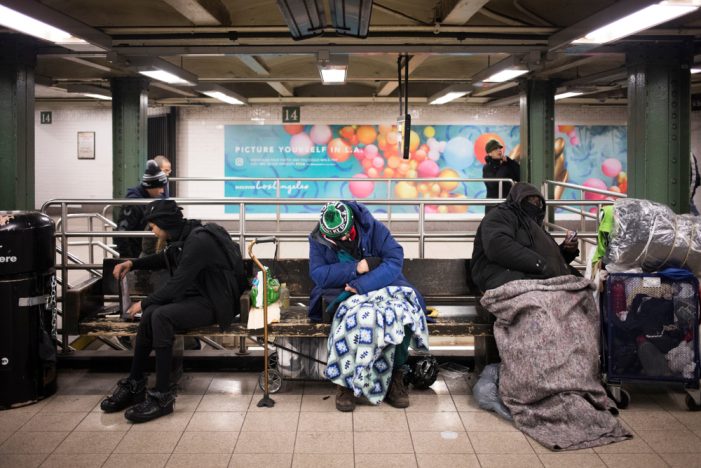By Esther Claudette Gittens | Editorial Credit: shu2260 / shutterstock.com
New York City, a global symbol of resilience and opportunity, faces deep-rooted challenges in addressing the needs of its vulnerable communities. Amid growing economic inequality, housing insecurity, and healthcare disparities, low-income families, immigrants, elderly residents, and others face systemic barriers to stability and prosperity. Addressing these challenges requires a bold vision, targeted policies, and sustainable funding strategies.
This comprehensive analysis outlines actionable solutions to enhance affordable housing initiatives and expand healthcare access while exploring funding mechanisms for NYC and NYS to implement these critical reforms.
- Vulnerable Communities in NYC
Vulnerable communities are defined by their limited access to resources and services, heightened exposure to systemic inequities, and risk of adverse outcomes. Key groups include:
- Low-Income Families: Struggling with high living costs and stagnant wages.
- Homeless Populations: Exceeding 70,000 individuals in shelters, with many more living on the streets.
- Immigrants and Refugees: Often lacking documentation, legal protections, or cultural familiarity.
- Elderly Residents: Facing healthcare challenges on fixed incomes.
- People with Disabilities: Requiring accessible infrastructure and specialized services.
These communities are disproportionately impacted by the interconnected issues of housing insecurity and inadequate healthcare access.
- Affordable Housing: Challenges and Solutions
2.1 The Housing Crisis in NYC
The affordable housing crisis in NYC stems from a combination of factors:
- Severe Shortages: The city faces a deficit of over 500,000 affordable units for low-income families.
- Skyrocketing Rents: Over 30% of NYC residents spend more than half their income on rent.
- Gentrification: Long-standing communities, particularly in Brooklyn and Queens, are displaced by rising property values.
2.2 Existing Affordable Housing Programs
NYC has implemented several initiatives to address the crisis:
- Rent Stabilization: Protects tenants from sudden rent increases.
- Inclusionary Zoning: Requires developers to include affordable units in new projects.
- Supportive Housing Programs: Combines housing with social services for vulnerable populations.
2.3 Proposed Solutions to Expand Affordable Housing
2.3.1 Increasing Public Investment
- Expand funding for the New York City Housing Authority (NYCHA) to repair and modernize aging units.
- Allocate resources for new construction projects targeting low- and middle-income households.
2.3.2 Strengthening Tenant Protections
- Introduce stricter rent control measures to prevent displacement.
- Implement stronger anti-eviction protections for low-income tenants.
2.3.3 Encouraging Community Land Trusts (CLTs)
- Empower neighborhoods to collectively own and manage land for affordable housing projects.
2.3.4 Leveraging Public-Private Partnerships
- Incentivize private developers to prioritize affordable housing through tax credits and subsidies.
2.3.5 Adaptive Reuse of Vacant Properties
- Convert underutilized commercial spaces into affordable housing units.
- Healthcare Access: Bridging the Gaps
3.1 The Healthcare Landscape in NYC
While NYC boasts world-class medical facilities, access to healthcare remains unequal:
- Coverage Gaps: 8% of NYC residents remain uninsured, with rates higher among immigrants and undocumented individuals.
- Healthcare Deserts: Parts of Staten Island, the Bronx, and Queens lack sufficient healthcare facilities.
- Cultural Barriers: Many residents face language and cultural obstacles in accessing care.
3.2 Current Healthcare Initiatives
NYC has introduced programs to address these disparities:
- NYC Care: Provides low-cost healthcare services to uninsured residents.
- Mobile Clinics: Bring medical services directly to underserved communities.
- Community Health Centers: Serve as primary care hubs for vulnerable populations.
3.3 Proposed Solutions to Improve Healthcare Access
3.3.1 Universal Coverage Expansion
- Advocate for Medicaid expansions and state-level reforms to guarantee healthcare for all residents.
3.3.2 Infrastructure Investments
- Build new hospitals and clinics in underserved areas.
- Modernize existing facilities to increase capacity and efficiency.
3.3.3 Culturally Competent Care
- Train healthcare providers to deliver services that are linguistically and culturally appropriate.
3.3.4 Leveraging Technology
- Expand telehealth programs to provide remote consultations for those in healthcare deserts.
3.3.5 Subsidizing Prescription Costs
- Establish city-funded programs to reduce the cost of essential medications for low-income residents.
- Funding Mechanisms
Implementing these ambitious housing and healthcare reforms requires innovative and sustainable funding strategies.
4.1 Municipal and State Budget Allocations
- Prioritize affordable housing and healthcare in annual NYC and NYS budgets.
- Redirect funds from nonessential projects to social infrastructure investments.
4.2 Federal Assistance
- Secure grants from programs like the Community Development Block Grant (CDBG) and Low-Income Housing Tax Credit (LIHTC).
- Advocate for increased Medicaid funding and healthcare subsidies.
4.3 Public-Private Partnerships
- Collaborate with private developers, healthcare providers, and nonprofit organizations to pool resources.
4.4 Progressive Tax Reforms
- Implement higher property taxes on luxury developments to fund affordable housing.
- Introduce a “millionaire’s tax” to generate revenue for healthcare programs.
4.5 Community Investment Models
- Establish community-driven investment funds to support local affordable housing and healthcare projects.
- Policy Recommendations
Policymakers must adopt bold and inclusive strategies to strengthen protections for NYC’s vulnerable communities:
- Integrated Planning: Address housing and healthcare needs simultaneously to maximize impact.
- Equity-Driven Approaches: Prioritize the most marginalized populations in all initiatives.
- Community Engagement: Involve local residents in decision-making processes.
- Data Utilization: Leverage data to identify gaps, allocate resources, and monitor progress.
- Conclusion
Strengthening protections for NYC’s vulnerable communities is essential for fostering an equitable, inclusive, and sustainable city. By investing in affordable housing and equitable healthcare access, NYC and NYS can ensure that all residents—regardless of income, background, or immigration status—have the opportunity to thrive.
This transformation requires collective action from policymakers, advocates, and community members. Together, they can build a city that truly reflects its values of diversity and opportunity.

